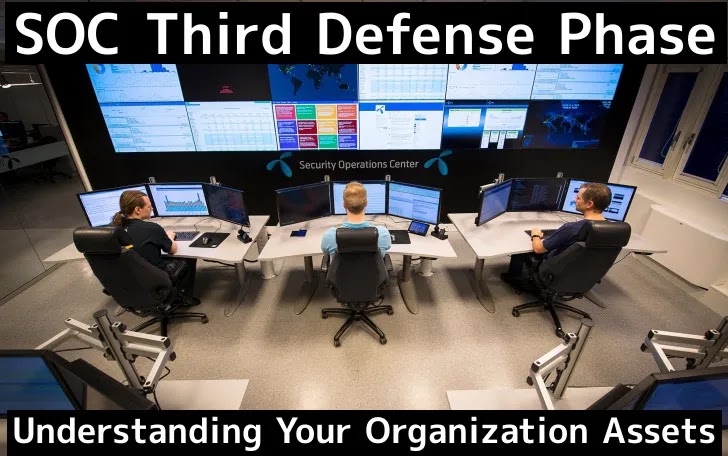In our first phase, we have seen the basic defense mechanisms which were recommended in organizations.
In our second phase, we have seen the understanding and the importance of the behaviors of modern-day malware to encounter.
In this third phase, we are going to see the importance of understanding your organization assets to provide better security.

Most of the attackers, create various malwares/scripts based upon the vulnerabilities which they found in an organization. Then, they target the attack surface of an organization. Attack surface is the assets or the path or the zones or consider as the connecting points where the attack has to be done. So the attacker definetly wants to learn your organization assets and initiate a best attack route.
So, likewise, the SOC team must learn the assets and understand the placement of devices.
“”Logically the SOC team must know where the devices are placed, how it was connected, how many network zones are there, understand the entire network routes and mappings, how the devices are hosted, how many servers are publically accessible, how many servers are running with known vulnerabilities, what are the OS platforms my organization have (Linux,Mac,Windows,Solaris,AIX, etc), how many physical locations of server(DC/DR), what are the BCP plans, what are the possible loopholes in network architecture is there, how many endpoints, how they are connected, how my servers are protected, how my SOC tools are protecting the entire organization assets, the firewall rules and policy validations, VPN controls, etc.””
Also you can learn SOC Analyst – Cyber Attack Intrusion Training | From Scratch
The basic classification of the most organizations will be;
1.) Network
a. LAN Zone
b.) DMZ zone
c.) WAN Zone
d.) Interconnected Zones
e.) Restricted Zones
2.) Database
a.) In-house
3.) Application
a.) In-House
b.) Publically Accessible Application
c.) Customized Application
4.) I0T
a.) Devices connected with LAN (Internal)
b.) Devices connected with WAN (Publically Accessible)
c.) Devices with restricted access.
5.) Common Operating System Endpoint/Server
a.) Windows Platform
b.) Linux Platform
c.) Solaris Platform
d.) Aix Platform
e.) Symbian Platform
The classifications of security devices and common protections of the most organization will be;







Also you can learn SOC Analyst – Cyber Attack Intrusion Training | From Scratch
Conclusion
Each and every classification of organization assets and their security measures, needs to be understand. These dots are needed to be correlated under SOC to provide a better defense.
SOC doesn’t have direct access of the organization policies and security clearnaces, but based upon the history of breaches/attacks and with the guidance of SOC the organizations policies can be rephrased.













